Ninja team Team 7/Team Kakashi Fictional universe Ninja World | Affiliation Ninja World | |
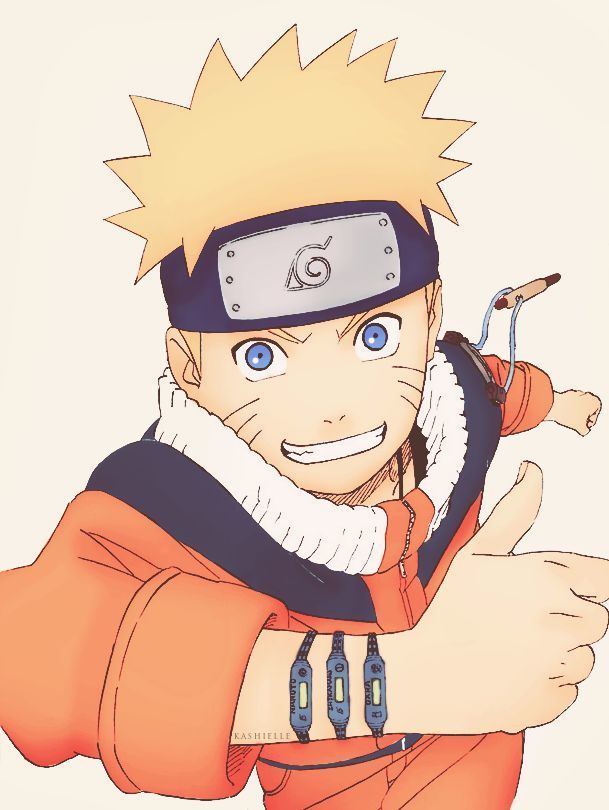 | ||
Voiced by JapaneseJunko TakeuchiEnglishMaile Flanagan Notable relatives Minato Namikaze (father, deceased)Kushina Uzumaki (mother, deceased)Jiraiya (godfather, deceased)Hinata Hyuga (wife)Boruto Uzumaki (son)Himawari Uzumaki (daughter)Hiashi Hyūga (father-in-law)Hanabi Hyūga (sister-in-law) Movies and TV shows Naruto Shippūden, Naruto Shippuden the Movie, The Last: Naruto the Movie, Naruto the Movie: Ninja Cla, Naruto Shippuden the Movie Similar | ||
Naruto Uzumaki (うずまき ナルト, Uzumaki Naruto) is a fictional character in the anime and manga franchise Naruto, created by Masashi Kishimoto. The eponymous protagonist of the series, he is a teen ninja from the fictional village of Konohagakure. The villagers ridicule Naruto because of the Nine-Tailed Demon Fox—a malevolent creature that attacked Konohagakure—sealed in his body. To be recognized, he aspires to become the village's leader, the Hokage. His cheerful and boisterous personality lets him befriend other Konohagakure ninja, as well as ninja from other villages. Naruto appears in the series' films and in other media related to the franchise, including video games and original video animations (OVA).
Contents
- Creation and conception
- Voice actors
- Description
- In Naruto
- In other media
- Popularity
- Critical reception
- References
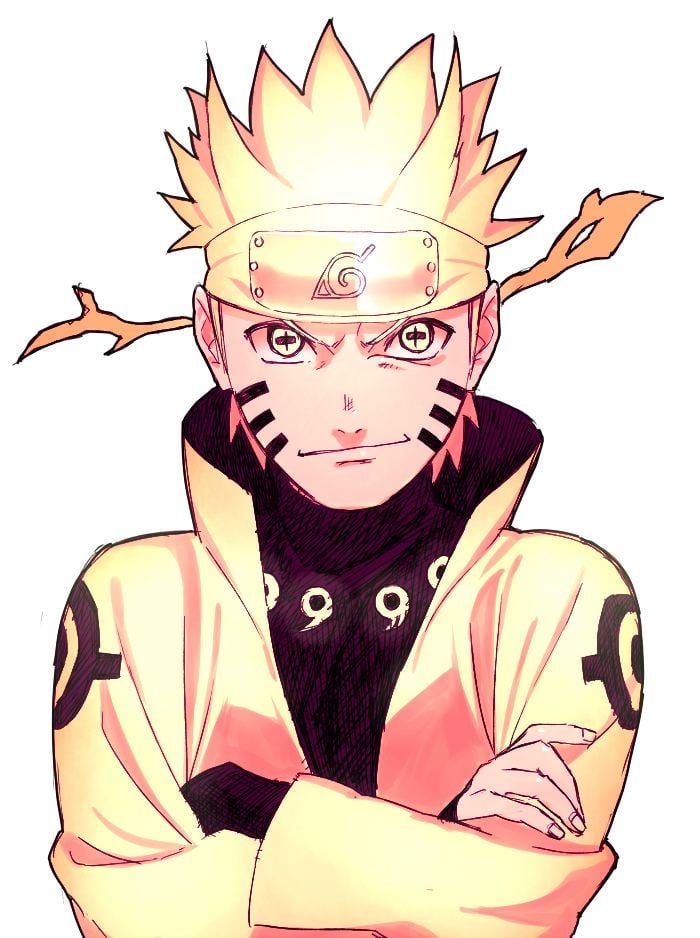
When creating Naruto for the initial part of the series, Kishimoto kept the character "simple and stupid", while giving him many attributes of an ideal hero. Kishimoto gave Naruto a dark side by writing an unpleasant story regarding the character's past for its development in the series. He has revised Naruto's image many times, providing the character with different clothes to appeal to Western audiences and to make him easier to illustrate. Kishimoto changed his design for Part II of the storyline, which starts two-and-a-half years after Part I. Naruto is voiced by Junko Takeuchi in the original animated series and Maile Flanagan in the English adaptations.
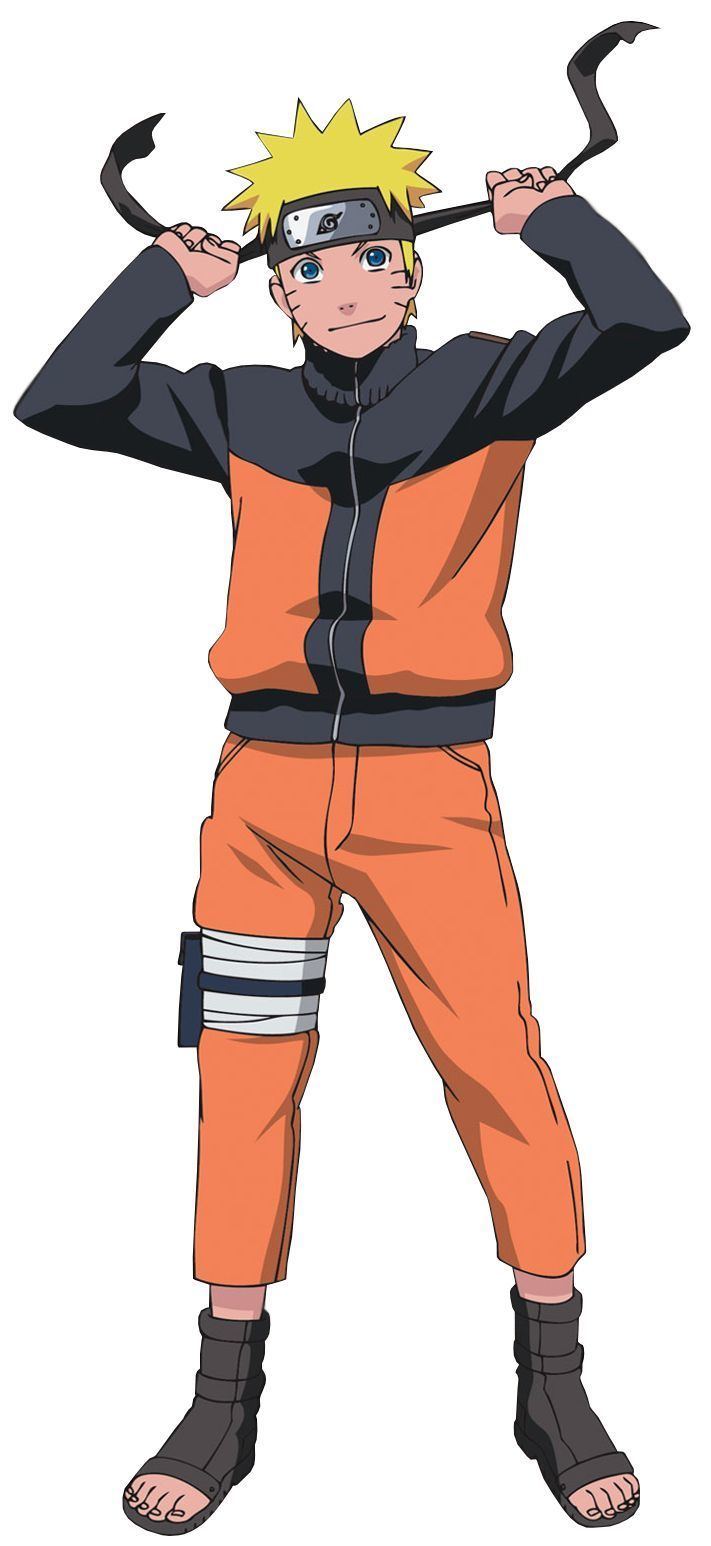
Naruto has received a lot of attention from people who watch the series, placing high results in popularity polls. Merchandise based on Naruto has been released, including figurines and keychains. Naruto's character development has been praised by anime and manga publications, and has drawn scholarly attention. Although some initially saw him as a stereotypical manga and anime protagonist comparable to those in other shōnen manga, they have praised his personality and development as he avoids stereotypes.
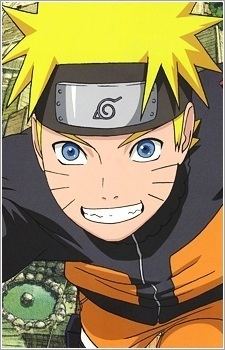
Creation and conception

Manga author Masashi Kishimoto incorporated traits he felt made an ideal hero in the creation of Naruto: a straightforward way of thinking, a mischievous side, and attributes possessed by Goku from the Dragon Ball franchise. Aiming to keep Naruto "simple and stupid", Kishimoto avoided modeling him after anyone in particular, instead conceiving of him as naïve with a dark side induced by his harsh past. Despite this, he is always optimistic, a trait Kishimoto said makes him unique. By and large, Naruto's personality is childish; the creator tried to convey this trait in his illustrations. On the manga cover of volume 10, for example, Naruto is depicted mimicking a turtle as a child might do. Naruto was Kishimoto's first published manga, and he focused on how Naruto's facial expressions appeared in difficult situations, trying to make them consistent. He commented: "It's rather awkward to talk about what makes Naruto appealing to audiences, but I think his being a knucklehead gives him an appeal." He believed it was Naruto's losses that made readers identify with him. However, he wanted Naruto not to feel defeat again which was his primary aim when writing the series. Kishimoto has said that Naruto's burning desire to be a ninja was based on his own burning desire to succeed as a mangaka.

There were accidental parallels to the Harry Potter fantasy books with Kishimoto comparing Naruto, Sasuke and Sakura to the three main characters from Harry Potter with both trios also starting a career in a classroom. During the series' publication, Kishimoto married and had children. This influenced how he viewed Naruto's character. Naruto met his parents, and learned of their sacrifices to help him to control the Fox inside him so that he could protect their world. As a result, Naruto appreciated his life more and learned that his parents loved him, something the author wanted the character to feel based on his own experience as a father.
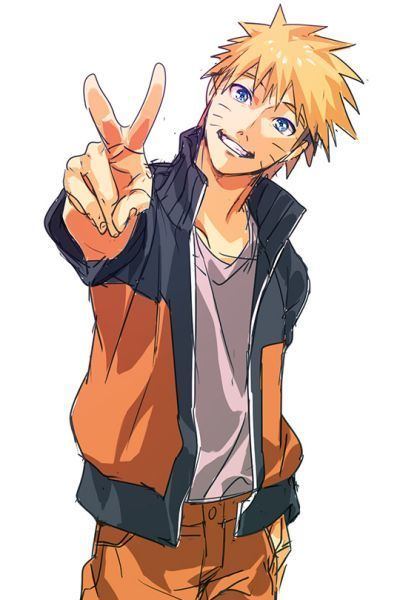
By the time Kishimoto made a drastic change to Sasuke's character, and the plot, by having him become one of the series' antagonists, he compared Sasuke and Naruto to the concept of yin and yang because of their notable differences. He has mentioned when one of the two progressed, he made sure the other did too. Before the serialization began, Kishimoto had decided the ending would feature a fight between these two characters. He wanted the fight to end with Naruto forgiving Sasuke as he had forgiven Nagato. Naruto's romantic partner was decided in the middle of the series' run. Since Hinata Hyuga always respected Naruto, even before the series' beginning, Kishimoto felt they were meant to be. This angered his wife who wanted Naruto to marry Sakura Haruno. When Sakura was introduced, Kishimoto did not think of her as Naruto's future wife. However, once Hinata had appeared, the author thought of forming a love triangle between the three characters. He later regretted this choice as he considered Naruto a fighting series with little focus on romance. Later, when seeing the staff's work to focus a film on Naruto's relationship with Hinata, he decided to oversee the project.
While a real ninja wears black to be stealthy, Kishimoto gave Naruto an orange jumpsuit to fit the shonen genre. His wardrobe is based on clothing that Kishimoto wore when he was younger. According to him, a pre-existing design would not have made Naruto unique, whereas something original would have made him too distinctive. Because Naruto is associated with spirals in terms of objects he uses, the designer incorporated swirl patterns into the costume. Initial illustrations depicted Naruto in boots, but Kishimoto replaced these with sandals, because he enjoys drawing toes. The goggles Naruto used to wear were replaced with a hitai-ite, or shinobi headband, because they were too time-consuming to draw. One of the most difficult design choices was the color palette of Naruto's outfit. The orange in his costume makes Naruto pop and the blue parts complement it. Kishimoto apologized to the anime staff for Naruto's design, as he considered it too difficult to animate.
Kishimoto was satisfied with his character having blond hair and blue eyes, something rarely seen in Japanese anime or manga. This also appealed to an international readership, something the editor of the American magazine Shonen Jump has noted. Of all the series' characters, Kishimoto most identified with Naruto. When asked why Naruto's favorite food was ramen instead of kitsune udon, Kishimoto said that he personally likes eating ramen. In the Naruto: Clash of Ninja video game series, Naruto is playable in various stages of the Demon Fox's manifestation, characterized by a red-colored chakra. Kishimoto took inspiration from the games' presentation of these forms, imitating one of them for the manga cover of volume 26. When designing Naruto for his Part II appearance, Kishimoto drew his forehead-protector wider to make his eyebrows easier to draw, something that had bothered him with his previous design. He also noted that Naruto's pants made the character look too childish. To remedy this, Kishimoto designed them to roll up, giving him a more mature appearance.
In the original Japanese versions of Naruto, Naruto often ends his sentences with the addendum "-ttebayo" (which achieves an effect similar to ending a sentence with "you know?" in English). Kishimoto wanted to give Naruto a childlike catchphrase, and "dattebayo" came to mind; he believed that the phrase complements Naruto's character, and served as a verbal tic that portrayed him in a brattish manner. Throughout the first episodes of the English dub version, "dattebayo" and "-ttebayo" were replaced with the phrase "Believe it!", both to mirror the effect, and to match the character's lip movements.
Voice actors
During the casting for the Japanese version of the animated adaptations, the staff sought a male voice actor for the Naruto role. Junko Takeuchi, an actress, was chosen instead following numerous auditions of male actors. Before recording the first episode, Takeuchi noticed several lines from the script ended with exclamation marks which helped her to define Naruto's voice. She noted difficulties in transitioning from the young Naruto to the older Naruto in the animated adaptation of Part II. She had to record the first episode of Part II when Naruto's character is older and more mature, only one week after voicing the younger, immature character before the time skip. Nine years after first voicing the character, while still finding it tough to voice Naruto, Takeuchi's opinion of him changed with her feeling he was "a very reliable young man". She admires his ability to prioritize and calmly make important decisions, and believes these traits will inspire viewers worldwide.
The producers of the English version of the anime stated that Naruto was the most difficult character to cast, adding that Maile Flanagan "has Naruto down, from the mischievous side, that precocious twelve-year-old we learn to love, to the serious side". Flanagan did not listen to Junko Takeuchi's performance of Naruto because she did not want to imitate it, stating: "I wanted to create my own voice for the character." In an 2014 interview, Flanagan claimed that during her audition she had never heard of Naruto. When she was chosen to voice him, she decided to look the show up and felt the release of the English dub would be popular. She is recognized more for her work voicing Naruto than from other roles she has done in her career. Some fans did not expect that Naruto would be voiced by a woman.
Description
Naruto Uzumaki is introduced as a young man with blonde, spiky hair, blue eyes and wearing goggles. He frequently wears an orange tracksuit. Following his ninja graduation he also wore a headband that denotes his position as a ninja from Konohagakure. In Part II of the manga, which features an older Naruto, he wears a new outfit as a result of his physical growth. The Nine-Tailed Demon Fox sealed in Naruto influences his body, causing him to resemble the Fox over the course of his battles. While Naruto only shows small changes such as sharp teeth and claws initially, he later develops a red tail made of the Fox's vital energy, or chakra. The red chakra starts by surrounding his body; once four tails are manifested, Naruto's blood starts merging with the chakra, coloring his entire body red. As the sixth tail appears, Naruto appears to wear the Fox's skeleton. Once Naruto takes control of the fox's chakra, he is able to maintain his regular form while using it. As a ninja, Naruto carries many weapons, but relies mostly on his ninja techniques while fighting, specializing in making clones of himself.
Introduced as a childish clown, Naruto seeks attention as he was ridiculed during his childhood. To be accepted and respected, he resolves to become Konohagakure's Hokage and surpass all previous leaders, no matter the difficulties. While becoming a ninja, Naruto forms friendships he initially lacked, linking some of them to family relationships. Although Naruto sometimes finds himself unable to accomplish the tasks he proposes to do, characters believe that he will be an excellent Hokage because of his positive impact on their lives.
In Naruto
Naruto is an orphan who has a dangerous fox-like entity known as Kurama the Nine-Tailed Fox sealed within his body by his father, the Fourth Hokage Minato Namikaze, the leader of Konoha's ninja force, at the cost of his own life and that of his wife, Kushina Uzumaki. Because he was the host of the Nine Tails, Naruto was isolated from most of Konoha's residents during his early childhood. Being associated with him was considered taboo. As a youth, Naruto makes jokes and plays pranks to attract attention. Desiring what he lacked in early life, Naruto dreams of becoming a Hokage himself with the hope that it will bring him the villagers' recognition and respect. In an attempt to become a ninja, Naruto is horrified to learn of his Jinchuriki nature, but finds acceptance from his teacher Iruka Umino, whom he views as a father. After learning the powerful Multi-Shadow Clone Jutsu, an ability to create physical copies of the user, Naruto becomes a ninja. He joins a ninja group under the leadership of Kakashi Hatake where he gains the friends he lacked during his childhood. These are his classmates who are also assigned to Team 7: Sasuke Uchiha, who he has had a rivalry with since they began studying at the ninja academy, and Sakura Haruno.
While going through an exam to increase his ninja rank, Naruto meets the legendary ninja Jiraiya and learns how to summon toads to aid him in battle, and to control part of the Nine Tails's chakra energy. The exams are interrupted by the invasion of Konohagakure by the criminal Orochimaru and the ninja of Sunagakure. Naruto defeats the sand village's One Tail Jinchuriki Gaara and convinces him there is a better way to live. Shortly afterward, Naruto discovers the Akatsuki, a criminal organization that seeks to extract the Nine-Tails from his body. Though Jiraiya drives them off during this first meeting, learning its member Itachi is both Sasuke's brother, and the man who killed their family, the Akatsuki still plan to kidnap Naruto. While accompanying Jiraiya to find a new village leader, Naruto also learns the Rasengan, a sphere of chakra for offensive purposes. When Sasuke leaves the village to join Orochimaru's forces to obtain the power to kill Itachi, Naruto becomes part of a rescue team to retrieve him. Naruto and Sasuke ultimately have a one-on-one battle, though neither can convince himself to finish off the other. The two go their separate ways, but Naruto does not give up on Sasuke, leaving Konoha with Jiraiya to prepare himself for his next encounter with Sasuke and the Akatsuki.
After his two-and-one-half years of training, Naruto returns to Konoha and begins to deal more actively with the Akatsuki threat by first saving Gaara from their clutches. To fight them, Naruto trains with Kakashi to infuse the Rasengan with his own wind-element chakra, creating the Rasen-Shuriken attack that proves instrumental in the downfall of the Akatsuki member Kakuzu. Despite being targeted by the Akatsuki, Naruto dedicates himself to finding and retrieving Sasuke as he eventually disposes of Orochimaru and starts acting on his vengeance-driven whims. Over time, though resisting the urge to use the creature's power, the Nine Tails's influence over him expands to the point where he begins to lose his rationality as more chakra manifests in the form of tails to the point the Tailed Beast can take control of his body. This ultimately causes him to go on a rampage, destroying everything in his path.
After learning that Jiraiya has been killed by the Akatsuki leader, Pain, Naruto prepares for a future encounter by learning toad-style Senjutsu, a power-enhancing ability involving the gathering of natural energy. When they finally face off, Naruto defeats Pain and convinces him to quit Akatsuki. At that time, Naruto learns that the Fourth Hokage was his father who sealed the Fox so that Naruto could use it to defeat the Akatsuki founder Tobi who was behind the Fox's attack on Konohagakure.
When Naruto discovers Sasuke's plan to attack the Leaf Village, he decides to confront him in a battle which could end both their lives should Naruto be unable to save him. He prepares himself for the upcoming fight by becoming a student under the Jinchiriki of Gyuki the Eight Tails, Killer Bee, to take full control of Kurama's powers. He succeeds with help from his late mother, Kushina Uzumaki, who placed a chakra imprint of herself within the seal. When Naruto learns that all his comrades are battling Tobi's army to protect him, he takes Killer Bee to join him in the battle, eventually cooperating with Kurama. As he fights, he becomes unconsciousness after Kurama is extracted from his body. As he is in a coma, Naruto meets Hagoromo Ōtsutsuki, the Sage of the Six Paths, who grants him enhanced Senjutsu that allows him to heal most of his fatal injuries he received in battle in order to face Madara, as well as making the powers of all nine tailed beasts at his disposal. After he and Sasuke fight Madara, they have to defeat Kaguya Ōtsutsuki, the creator of the Ten Tails, to prevent her from killing everyone, including themselves, on the battlefield. Though Naruto manages to seal Kaguya with Sasuke's help, he ends up having to fight him when he reveals his true reason for being an assistant. When their battle is over, they both end up losing one arm. As Sasuke admits defeat he reconciles with Naruto. He receives a new arm created from Hashirama's cells later. Years later, Naruto is married to Hinata Hyuga with whom he has had two children - Boruto and Himawari. He becomes the Seventh Hokage (七代目火影, Nanadaime Hokage) after Kakashi's retirement.
In other media
As the series' title character, Naruto appears in every movie in the series. He typically appears as the lead character on a mission with comrades from Konohagakure. Naruto: Shippūden the Movie marks the first appearance of Naruto in his Part II form. In Road to Ninja: Naruto the Movie, an alternate version of the character named Menma appears as the main antagonist of the film.
In The Last: Naruto the Movie, which takes place after the events of the series, Naruto faces Toneri Otsutsuki while eventually taking his relationship to Hinata to the next step leading their marriage. Kishimoto was embarrassed writing romance scenes in the series. He stated again that: "he wasn't sure he'd even be able to watch the film's kissing scene". In Boruto: Naruto the Movie, taking place after the series epilogue, Naruto's Hokage status strained his relationship with his son Boruto as his duties often kept him from his family. It came to a head with Naruto having his son disqualified for cheating during the final phase of Chunin Exams. He is abducted by Momoshiki and Kinshiki. Once he is saved by his son Boruto, Sasuke, and the Kage, before helping his son create a giant Ransegan to destroy Momoshiki, he is able to reconcile with Boruto. There is also a spin-off where Naruto and his allies go to defeat a new Akatsuki organization.
Naruto also appears in all four OVAs produced for the series: helping his friend Konohamaru Sarutobi find a four-leaf clover in the first; escorting a ninja to his village and fighting the criminal who stole the village's "Hero's Water" in the second, participating in a tournament in the third, and working with Team 7 in the fourth. He appears as a supporting character in the spin-off manga titled Rock Lee and his Ninja Pals where his fellow Konohagakure ninja Rock Lee is the main character.
Naruto is a playable character in the Naruto video games. In several titles, it is possible to access a special version of him enhanced with the power from the Nine-Tailed Fox. In several games from the Ultimate Ninja series he is playable with his own versions of Rock Lee and Might Guy's techniques while wearing their costumes. Naruto Shippūden: Gekitou Ninja Taisen EX marks the first appearance of Naruto in his Part II form in a video game. For the series' 10th anniversary, Masashi Kishimoto drew an illustration of Naruto as Hokage. This portrayal of Naruto later appears as a secret character in the game Naruto Shippuden: Ultimate Ninja Storm 2. He appears in several crossover video games that feature Naruto fighting against characters from other manga; these games include: Battle Stadium D.O.N, Jump Super Stars, and Jump Ultimate Stars. A Naruto avatar made a guest appearance in the MMORPG Second Life for a Jump Festa promotion titled Jumpland@Second Life. In Dragon Ball Z: Battle of Z Naruto's costume appears as an alternate costume for Goku.
Popularity
In every official Weekly Shōnen Jump popularity poll of the series, Naruto ranks in the top five characters and, as of the beginning of 2012, has been in first place twice. In 2006, Naruto lost his top-two status to the characters Deidara, Kakashi and Sasuke in the magazine's sixth poll. In the 2011 poll, Naruto was once again in first place. Merchandise has been modeled after Naruto, including keychains, and action figures. In the 2009 Society for the Promotion of Japanese Animation Awards, Junko Takeuchi won Best Voice Actress (Japanese) for her work as Naruto. Naruto placed sixth in IGN's Top 25 Anime Characters of All Time with writer Chris Mackenzie stating that although: "Naruto actually isn't the most popular character in his own series most of the time", he is "the engine that powers the franchise". In the 2011 Guinness World Records Gamer's Edition, he was voted as the twenty-ninth best character appearing in video games. While working for CyberConnect2 in the making of the .hack games, character designer Yoshiyuki Sadamoto used Naruto as a model for .hack's protagonist, Kite. Shortly afterwards, CyberConnect2 started developing the Naruto: Ultimate Ninja games although Sadamoto recalls he was unaware this fact. CyberConnect2 CEO Hiroshi Matsuyama also participated in the 2012 Paris Marathon while cosplaying as Naruto to celebrating the release of a new video game.
Critical reception
Naruto's character has received mostly positive critical response in printed and online publications. Praise was given by Joseph Szadkowski of The Washington Times who noted that Naruto "has become a pop-culture sensation". Naruto's character was analyzed by GameSpot's Joe Dodson who noted that despite having an "ideal" life, he still suffers from severe isolation. Nevertheless, he was praised for his optimistic personality by Carl Kimlinger of Anime News Network (ANN). Writers for Mania Entertainment labeled him a "good lead character" with good overall development despite certain problems at the beginning. On the other hand, Christina Carpenter of T.H.E.M. Anime Reviews disagreed with other writers, noting that while Naruto is a "likable enough scamp", his type of character has been done before in many anime and manga series. A study which looked at if readers could predict character types based on physical cues regarded Naruto as a ENFP (Myers-Briggs) character type, impulsive and spontaneous, finding a foil in the ISTJ-type Sasuke.
Writing for Popular Culture in Counseling, Psychotherapy, and Play-Based Interventions, Lawrence Rubin states that while Naruto has an optimistic and hyperactive personality, the Nine-Tailed Demon Fox (Kurama) within his body symbolizes his negative emotions. He comments that Naruto has a malevolent attitude when dealing with intense conflicts and emotions. He also states that Naruto would use Kurama's chakra for battles he can not handle with his own chakra, and is not greedy for it. However, Rubin notes that the more he uses Kurama's chakra, the more he puts his comrades and himself in danger. Rubin feels the reason Naruto is a troublemaker is because some villagers avoid him while others mistreat him. He states that children growing up in the real world who have development issues can relate to his character. Rubin states that the search for acceptance, and being acknowledged by his peers is what motivates Naruto to keep going until he reaches his life's goal, becoming the Hokage. Rubin feels that Naruto's fights with enemies who try to bring harm to the Leaf Village further motivate him to become a powerful shinobi, and a "complete and mature person". Rubin concludes that Naruto's character development is similar to that of a modern American hero, the type who accidentally becomes better during a series and is able to build or restore peace.
Christopher A. Born, writing for DOAJ journal ASIANetwork Exchange, regards Naruto as a complex post-modern hero, showing "great heart". From Naruto's beginning, Born comments that the character is a nuisance, suggesting Naruto is the very definition of the word, given how he is characterized in the series, including how he interacts, and his behavior. Born argues that Naruto as a whole shows Confucian values, and that Naruto himself unsettles harmony in society. Amy Plumb, a PhD candidate at Macquarie University, states that Kishimoto used the mythology of the kitsune for Naruto's development throughout the series. She notes that at the beginning of the series, Naruto was a prankster and always causing trouble, the same as the kitsune. Plumb describes the Kyuubi (Demon) seal on Naruto's stomach as a catalyst for how he develops. Writing for Manga's Cultural Crossroads, Omote Tomoyuki compliments Naruto's character, saying he has great ambition to achieve a tragic destiny. He comments how the character has matured over the course of the series, stating how after he became a shinobi, he had let go of his childish ways that happened in the beginning of the series, and how he rarely joked around when he became a teenager in Part II of the series. Franziska Ehmcke, professor of Japanese studies at Cologne University, theorized that Naruto was named after whirlpools of the sea landscape of the Awa no Naruto, and compared his behavior to it, as both figures have uncontrollable energy within them.
His relationships with the other characters was described as appealing by IGN's Charles White and Jason Van Horn, most notably his rivalry with Sasuke, as it shows "signs of maturity" in Naruto. However, his wish to retrieve Sasuke after the end of Part I was criticised because of his subsequent suffering. In a poll by Japanese pollster Charapedia, Naruto and Sasuke's rivalry reached the top place. Jacob Hope Chapman of ANN listed Naruto and Sasuke as one of "Anime's Fiercest Frenemies" considering their similarities and how they become friends after a mortal battle. Amy McNulty of ANN also praised their final fight, expressing amazement at how brutal some scenes were since Naruto had become more of a pacifist than previous story arcs. His romantic involvement with other characters led to disputes as there were fans in favour of his relationship with Sakura Haruno, while others preferred Hinata Hyuga. His romance with Hinata in the film The Last earned multiple positive reactions from the media. Some critics wished The Last could be condensed so that their relationship was the focus of the movie. On a similar note, both McNulty and Andy Hanley from UK Anime Network enjoyed Naruto's relationship with his son Boruto due to the differences in their childhoods and how that becomes the focus of the film Boruto.
Kimlinger of Anime News Network said that while Naruto's initial fight scenes are lacking when compared to others, his encounter with Gaara is one of his best moments because it surpassed most shōnen stereotypes, owing to his tactics. ANN's Theron Martin and Mania Entertainment's Justin Rich made similar comments. The character's final fight against Sasuke at the end of Part I attracted similar responses, due to the fighting styles employed, and the character development resulting from their rivalry. The enormous physical changes caused by the Nine-Tailed Demon Fox have also been the focus of critics, as Naruto's loss of control causes him to become a bigger threat to his loved ones than other series' antagonists. Carlo Santos of ANN commented on the character's growth in Part II, specifically his fight against Pain in which Naruto's comments on peace, and the means by which it is achieved, touch on philosophical themes never seen in a shōnen series. Chris Beveridge of Mania Entertainment noted a change in Naruto's attitude as he acts calmer and more serious than in previous story arcs. Naruto's new Senjutsu style was praised as was his careful preparation for the fight against Pain, which resulted in a detailed display of his skills. Singer Diana Garnet expressed her pleasure at recording one of the ending theme songs for the animated series of Naruto Shippuden stating that not only she has been a fan of the series ever since she was younger, but was also motivated by Naruto's character because of his determination not to give up no matter what challenge he faced.
